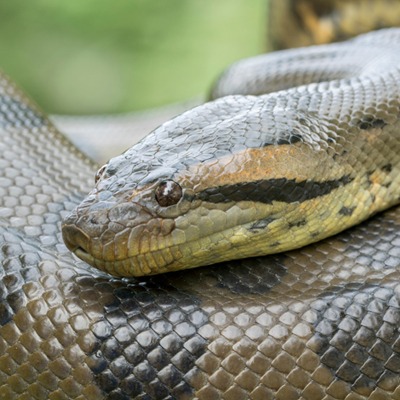

“Years ago I watched the Hollywood movie Anaconda (with Jennifer Lopez),” said Carlos Jaramillo of STRI. But their most spectacular discovery was the fossilized vertebra of a previously undiscovered species of snake. Fossil finds included giant turtles and crocodiles, as well as the first-known bean plants and some of the earliest banana, avocado and chocolate plants. Over the following decade, collecting expeditions led by the Smithsonian Tropical Research Institute in Panama and the Florida Museum of Natural History at the University of Florida opened a unique window into what some scientists believe to be the first rainforest on Earth. In 2002, a Colombian student visiting the coal mine made an intriguing discovery: a fossilized leaf that hinted at an ancient rainforest from the Paleocene epoch. The startling discovery of Titanoboa was made by a team of scientists working in one of the world’s largest open-pit coal mines at Cerrejón in La Guajira, Colombia. The Smithsonian Institution Traveling Exhibition Service (SITES) has scheduled stops in museums in Florida, Nebraska and Panama. The exhibition will begin a 15-city tour next January. Videos tell the story of this amazing scientific discovery with scenes from the Smithsonian Channel’s two-hour special, Titanoboa: Monster Snake, which premieres on the Channel Sunday, April 1, at 8 p.m. The exhibition includes the snake replica and two vertebra casts made from the original fossils: a 17-foot-long modern green anaconda and the vertebra from Titanoboa, as the giant snake is called. Sixty million years ago, in the era after the mass extinction of the dinosaurs, scientists believe that a colossal snake related to modern boa constrictors thrived in a hot tropical climate.

Slithering in at 48 feet long and weighing an estimated one-and-a-half tons, a realistic replica of the world’s largest snake is on exhibit at the Smithsonian’s National Museum of Natural History until Jan.

They are opportunistic apex predators and eat a wide variety of prey. Green anacondas have slow metabolisms, and with the exception of breeding females, only need to eat once every few weeks. Like most snakes, they can detach their jaw to swallow prey much larger then themselves, though they are careful to weigh the risk of injury with large prey. They use their strong jaws to capture their prey, then use their muscular bodies to suffocate the prey before swallowing it whole.

As members of the boa family, green anacondas are nonvenomous constrictors. Like all snakes, green anacondas are carnivores.


 0 kommentar(er)
0 kommentar(er)
